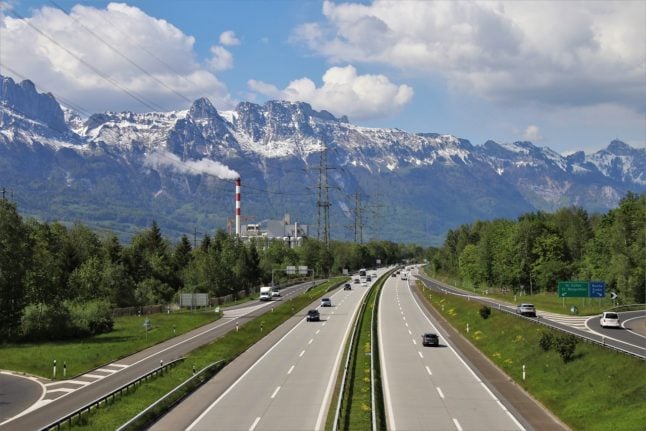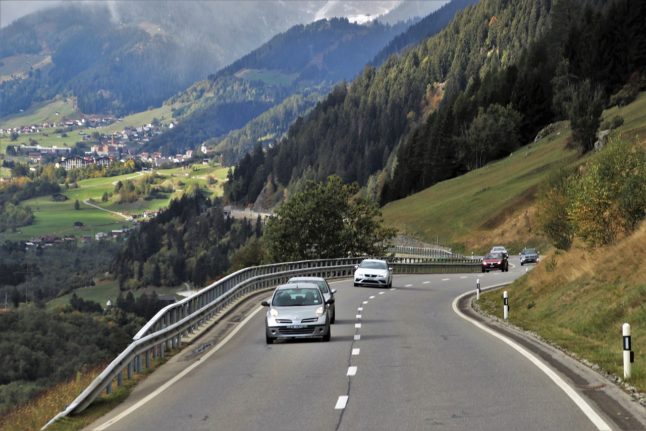New motorway vignettes
The vignette is obligatory when travelling on the country’s highways for residents and tourists alike.
You have the whole month of January to either affix the 2024 sticker to your car’s windshield or purchase an electronic version.
If you don’t and are caught on one of the country’s motorways without one, you will be slapped (though not literally) with a 200-franc fine.
End of tax breaks for electric vehicle owners
As an incentive for people to buy electric vehicles (EVs), which are more environmentally-friendly than conventional automobiles, the government had exempted these cars from the import tax since its introduction in 1997.
However, from January 1st, EVs will be subject to the same 4-percent import duty imposed on traditional fuel vehicles.
“The Federal Council takes the view that the exemption from duty as a incentive is no longer necessary, given the sharp rise in the share of e-vehicles in total car imports and the convergence of prices,” it said.
READ ALSO: Why electric car owners in Switzerland will have to pay tax in future
New car efficiency classifications
The Federal Department of the Environment, Transport, Energy and Communications (UVEK) has revised the calculation of the energy efficiency categories for passenger cars.
From January 1st, 2024, individual car models may be classified in a different category (A-G), which may mean that you may have to pay higher motor vehicle taxes in the future.
The cantons of Bern, Freiburg, Glarus, Obwalden, St. Gallen and Thurgau include the energy efficiency in the tax assessment.
CO2 rules for registering vehicles from small and direct importers tighten
From January 1st, anyone in possession of a passenger car or van that exceeds a certain CO2 target will need to pay a penalty before the vehicle can be registered for the first time.
Driver’s license revocation rules change
If you have your learner’s or driver’s license revoked from March 1st, it will no longer be possible for you to be issued an ID category while your licence is suspended. Any application for a new category – for example a heavy goods vehicle licence – will be automatically turned down.
READ MORE: The dos and don’ts of driving in Switzerland
Additional eyesight tests no longer required
Anyone with a learner’s license or driver’s license who would like to acquire a new ID category in 2024 will no longer have to take an additional eye test from March 1st.
This new rule also applies to anyone wanting to acquire a professional ID category. Instead, your eyesight will be checked during the traffic medical examination which will next year be mandatory for anyone over the age of 75 – and not 65 as is the case until March 1st.
Longer practical tests for car and motorcycles
From March 1st, driving tests for categories A – motorcycles over 48 hp (35 kW) – and B – motor vehicles under 3.5 tons total weight – must include a drive on public roads for at least 45 minutes as opposed to the current 30 minutes.
Speedometer to become compulsory for fast e-bikes
From April 1st, 2024, all new fast e-bikes – which is any e-bike with a pedal assistance of up to 45 km/h – will only be allowed on Swiss roads if they’re equipped with a speedometer.
Fast e-bikes that are already in use must be retrofitted with a speedometer by April 1st, 2027, to ensure that maximum speed limits, particularly in Switzerland’s 20 and 30km/h zones, are observed.
Anyone caught riding without a speedometer could be fined 20 francs, while those riding faster than the 20 and 30 km/h speed limit could be hit with a 30-franc fine.
READ MORE: Switzerland’s laws that electric bike owners need to know
Assistance systems become mandatory
From April 1st (and the EU from July 7th), all new cars will need to be equipped with mandatory assistance systems for safety reasons.
This means that each car, regardless of the model’s launch date, will need to have the ISA cruise assistant, drowsiness and attention warning, emergency lane departure warning, emergency brake lights, a reversing assistant, and a black box.
Paper driver’s licenses no longer valid from late 2024
Anyone in possession of a paper driver’s license must exchange it for the new card-format one by October 31st, 2024.
Should you hit Swiss roads with your old paper driver’s license, this will be considered illegal from November 1st and may result in a fine.
German traffic fines must be paid
Due to a new police agreement between Germany and Switzerland, you can now be prompted to pay for any fines you receive in Germany by Swiss authorities – if the German authority makes a request in Switzerland.
Note that this method also applies the other way around for Germans who need to pay traffic-related fines in Switzerland.



 Please whitelist us to continue reading.
Please whitelist us to continue reading.
Member comments